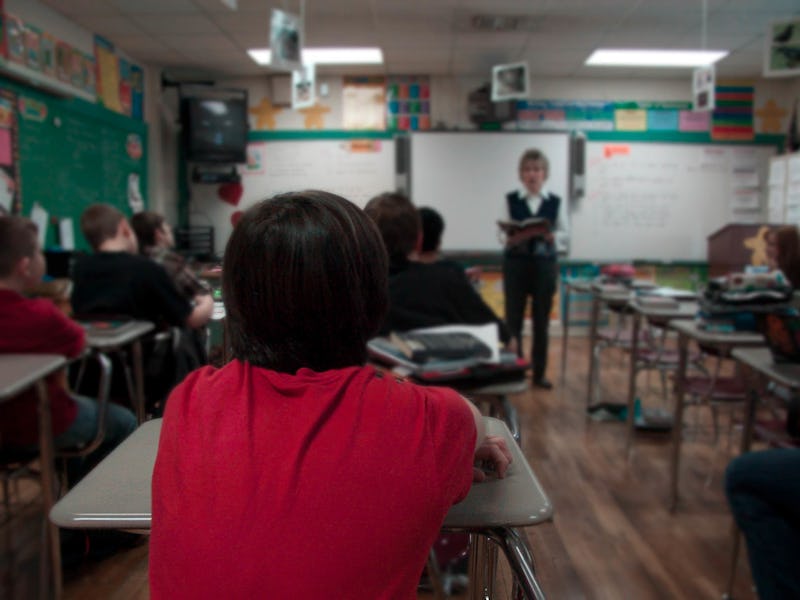This is the Grade When American Students of Color Lose Faith
It's earlier than you think.

It’s difficult to quantify exactly when children of color begin to internalize racism. Yet a group of researchers studying exactly that has found strong indications that minority students begin to recognize biased treatment around junior high. To be more specific, in seventh grade.
Here’s why: In a series of studies, the researchers analyzed data tracking hundreds of white, African-American, and Hispanic students over a period of eight years. They asked them to self-assess if they were treated fairly in school, and if they were treated fairly relative to their peers of other races. African-American students overwhelmingly reported the most disciplinary issues; the surveys were confirmed by school records. This strongly implies bias on behalf of teachers, both in the sense that black students are more likely to be treated in a manner that elicits negative behavior, and in the sense that white students are more likely to exhibit the same behavior but not be disciplined.
The likelihood of white students having a successful academic career could be traced back to those junior high years. In a second study, Hispanic students were found to follow a similar pattern as African-American students.
The research was published Wednesday in Child Development.
The ripple effects are dramatic: The lack of trust students of color incur from seventh grade forward correlates to their likelihood of attending college. The path toward potentially keeping those students out of trouble and with their faith in the system intact? Teachers who surprise them and affirm their value.
Per the abstract:
From 6th to 8th grade, white and African-American students were surveyed twice yearly (ages 11-14; Study 1, N = 277). African-American students were more aware of racial bias in school disciplinary decisions, and as this awareness grew it predicted a loss of trust, leading to a large trust gap in 7th grade. Loss of trust by spring of 7th grade predicted African-Americans subsequent discipline infractions and four-year college enrollment. Causality was confirmed with a trust-restoring wise feedback treatment delivered in spring of 7th grade that improved African-Americans 8th grade discipline and college outcomes.
Given how underpaid and overworked public school teachers are, the following silver lining is a thin one, but it is there nonetheless: creative efforts from teachers could potentially counteract the effects of bias on middle-school students of color in this critical phase. They called this “wise” critical feedback — things like hand-written notes of affirmation that demonstrated the teacher believed the student to be valuable.
Can wise critical feedback from a teacher, which has already been shown to sever the effect of academic mistrust on subsequent willingness to revise an essay and later mistrust (Yeager et al., 2014, Studies 1 and 2), set in motion a virtuous recursive cycle? We explored whether a wise hand-written note from a teacher, known to convey respect and build trust (cf. Gregory & Weinstein, 2008), might set in motion a process that leads to greater behavioral compliance the subsequent year as well as greater eventual enrollment at a four-year college (also see Okonofua, Paunesku, & Walton, in press).
It seems likely. For what it’s worth, white students surveyed for this research showed no indication of being affected either by broken trust or by “wise” feedback.